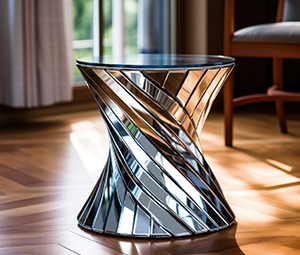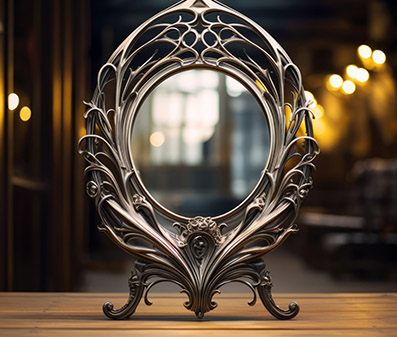Selecting the right glass shades, textures, and colors for furniture can significantly enhance the aesthetics and ambiance of any space. Glass, with its transparency and versatility, adds a touch of elegance and modernity to furniture pieces. When choosing glass for furniture, several factors such as color, texture, and transparency need to be considered to create a harmonious and visually appealing design.
1. Transparency Levels: The level of transparency in glass can dramatically influence the overall look of the furniture. Clear glass is a classic choice, offering a timeless and sophisticated appeal. For a more private or subdued effect, frosted or tinted glass can be chosen. Tinted glass comes in various colors, adding a subtle hue to the furniture while maintaining transparency.
2. Color Choices: The color of the glass can set the mood and complement the existing color scheme of the room. Neutral tones like clear, white, or black are versatile options that can seamlessly blend with different interior styles. Alternatively, vibrant hues such as blue, green, or amber can be used to create a focal point and add a pop of color to the space.
3. Textures and Finishes: Textured glass can add depth and visual interest to furniture. Options like etched, patterned, or ribbed glass can create beautiful plays of light and shadow, adding a touch of sophistication to the furniture piece. Mirrored glass, with its reflective surface, can make the space appear larger while adding a touch of glamour.
4. Consider the Surroundings: It’s essential to consider the surrounding elements when choosing glass for furniture. If the room has a lot of natural light, clear or lightly tinted glass can maximize the flow of light, making the space feel airy and spacious. In rooms with limited natural light, frosted or textured glass can diffuse the light, creating a soft and cozy ambiance.
5. Durability and Maintenance: When selecting glass for furniture, consider its durability and ease of maintenance. Tempered glass is a popular choice for its strength and safety features. Additionally, glass surfaces are easy to clean and maintain, making them suitable for various furniture pieces such as dining tables, coffee tables, and display cabinets.
In conclusion, the choice of glass for furniture should be a thoughtful decision that takes into account the desired level of transparency, color preferences, textures, and the surrounding environment. By carefully selecting the right glass elements, one can transform ordinary furniture into extraordinary pieces that enhance the overall aesthetic appeal of any living space.
Post Views: 465















